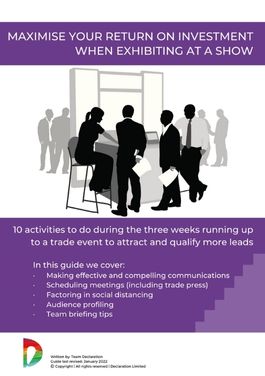Maximise your Return on Investment When Exhibiting at a Show
You’ve invested in exhibiting at an industry trade show and your major activities – stand design/refresh, new pop-up designs, organising transportation and accommodation etc, – are all well in hand. However, what can you do to get as much return as possible on your investment?
TABLE OF CONTENTS
1 – Social Media
Plan a social media campaign around your presence at the event. However, avoid running with posts which are all along the lines of “We’re excited about being at …” or “Looking forward to ….”. Such posts are valueless as any likes you receive will probably be from people within your own organisation.
Instead, use the posts to tell people how they can benefit from visiting your stand. What will they learn? What can they talk to you about? How can you help them? After all, it’s why they’re going to the show.
One strategy that we’ve seen produce great results is to do a series of advice-rich posts. Perhaps some ‘Top Tips’ or ‘How to’ posts. Include several relevant #tags in your posts and mention a product or two along the way.
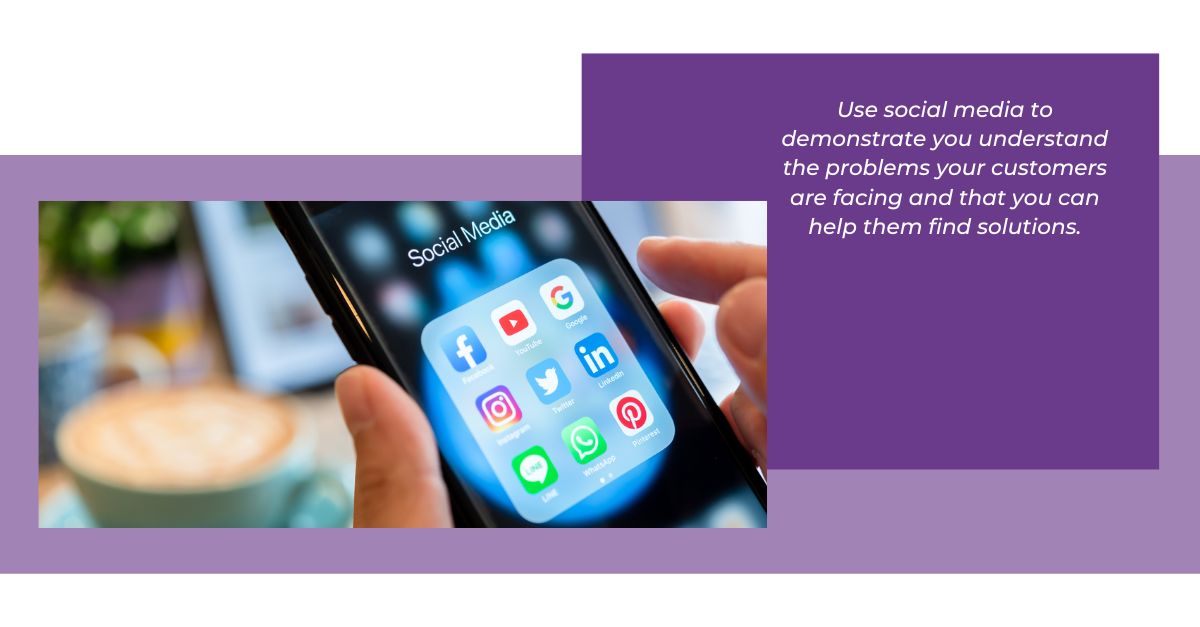
The call to action is to schedule a meeting and ideally you should take interested parties to a dedicated landing page on your website that allows people to book an appointment (see below) or to simply connect if they are interested in what you have to say but will not be attending the show.
Advice-rich posts are of more value to you than bland, and unfortunately all too common, “We’re excited about” ones because they are of more use to your target audience. You may receive fewer likes and comments but you’re likely to see more web traffic and appointments being booked.

Keep an eye on what your competitors are pushing out through social media and be prepared to adjust your messaging if required.
Lastly, consider the medium. We strongly recommend you employ video. Some of your posts should be on-camera (with text overlay). After all, you’re hoping to meet with people and talk to them one-on-one, so show them who you are. Let them see who they’ll be meeting on your stand.
2 – Show News
If the event’s website has a dedicated news page and the show organisers are inviting exhibitors to submit news you should do so. The organisers might also be sending out emails to their contacts (i.e. pre-registered attendees and the attendees of previous shows).
As for what to say and when, you can adopt the same strategy used for your social media posts – but without being hindered by the character count limits of LinkedIn and Twitter, for example. Indeed, if you can submit a series of news items (conveying the benefits of visiting your stand/booth) you wish to write these first (it’s a few hours work, tops) and then create subbed down versions for social media. It’s an efficient re-use of content.

As with social media, keep an eye on the news your competitors are submitting.
3 – Schedule Meetings
This activity needs to start about three weeks before the event.
You should contact some or all of your existing customer base, plus all prospects already on your system.
If you use a CRM like Hubsot (our favourite) you can send out invitations that convey why you’re exhibiting (again, make sure it’s all about benefits) and include links to a landing page on your website. You may also wish to use an appointments scheduling tool, one that sends out automated confirmations.
Automation aside, you may wish to phone some people to make invitations and book appointments the old-fashioned way.

4 – The Trade Press
If the show is officially sponsored by (or at least has tie-ins with) a number of media outlets, it’s likely some journalists will be attending. You may therefore wish to meet with them, particularly if you have important news for the show (a product launch, for example).
Don’t leave contacting the journalists too late, though. Many other companies will be after their precious time too. Two weeks before the show is a good time to reach out, as many journalists will have started (but are unlikely to have already filled) their appointment schedules.
5 – Product Information
Though trade shows and events have returned, the Coronavirus is still with us and many people remain cautious about getting too close to others. Whilst event organisers are doing much to ensure safety, and restore visitor confidence, you need to do your part too.
If you are going to have products on display that visitors may wish to touch, make sure you have hand sanitiser on your stand.
Also, think about puttig key information (including your company name and product name) on plaques beside your products. That way, if they take a photo on their phone, they have most of what they need.
You may also wish to consider using QR codes to take visitors to the product pages of your website.
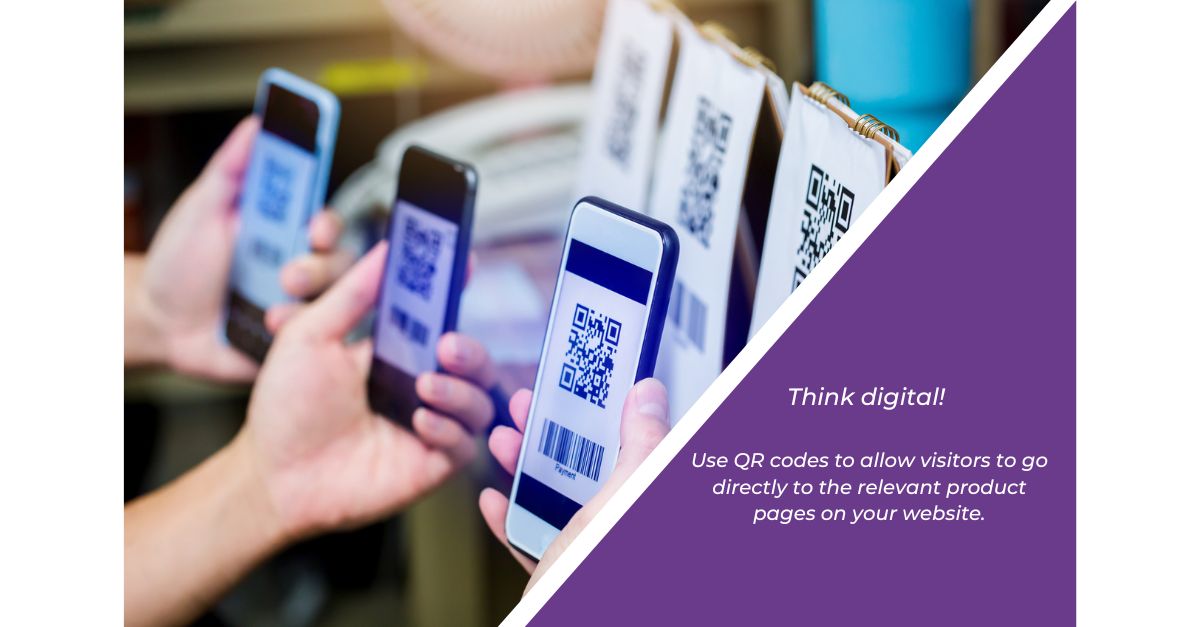
6 – Engagement
Just as many remain cautious about handling products, the same rings true for accepting business cards, so you need an alternative way of exchanging contact details.
Most trade shows supply or make available equipment with which exhibitors can scan visitor badges. However, there are some very good badge-scanning apps for phones available.
In instances when visitors are comfortable handing over business cards, it’s common practice for stand personnel to staple these to a form they’ve completed; where the form carries a number of standard questions and has space for additional comments. We are of the opinion that this is a bad practice, because:
- some cultures take great pride over their business cards, and (even if the visitor does not say anything) they will consider the stapling of their card – or writing on it, for that matter – disrespectful.
- Data handwritten on a paper form will need to be made digital to feed into the your CRM (or at least a spreadsheet) so you may as well capture the information digitally. In this respect there are apps for tablets available.

7 – Competitions & Giveaways
These remain popular at nearly all shows – competitions can range from simple ones – such as inviting visitors to place a business card into a bowl to be in with a change to win a prize – to more complex ones that require the visitor to compete in some way (a game of some sort). There are also guessing games; the number of sweets in a jar, for example.
Again, you need to factor in the effects of the Coronavirus pandemic. When trade shows returned, social distancing made some types of competition difficult. Even now, you may need to think twice about how crowded your stand might get, particularly if you’re announcing winners on on your stand.
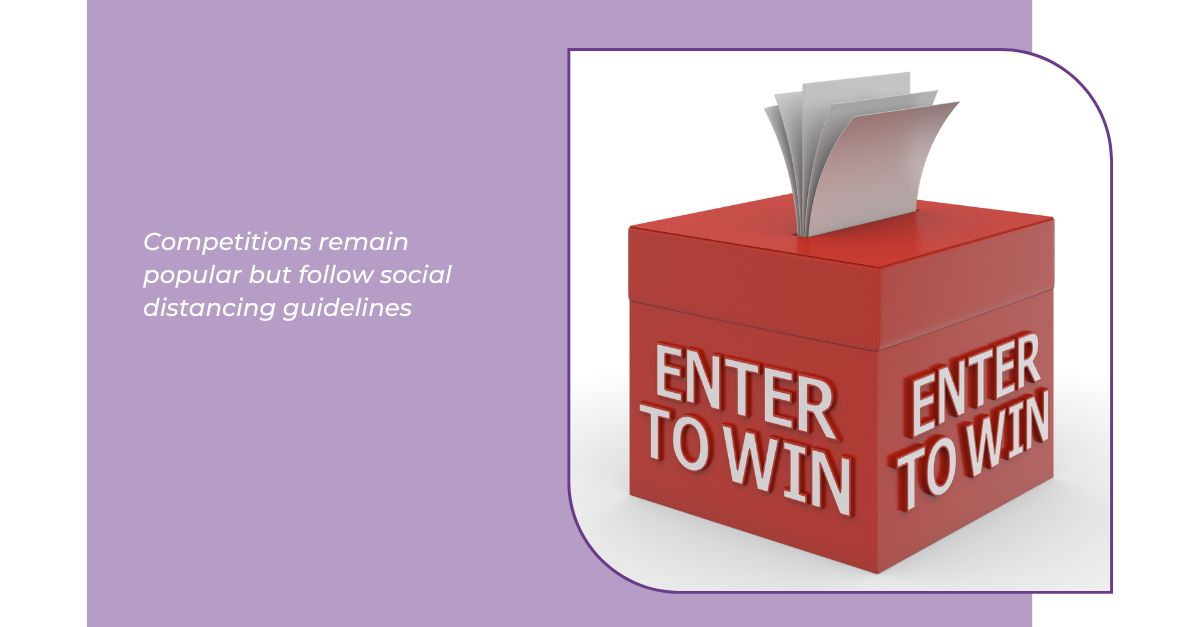
The value of prize(s) will govern how many people you tempt into entering the competition, and what visitors are prepared to do. In our opinion, they should always have to do something (ideally something that helps you profile them – see section 9), as visitors need only put a business card in a bowl to enter the competition, you’re going to capture a LOT of contacts that haven’t the slightest bit of interest in your products.
8 – The Stand Team
Your team needs to be prepared for a steady flow of visitors – some as scheduled appointments (see above) and others as footfall.
Also, while we’ve recommended how product information should be made available digitally, visitors will still want to talk. Again, social distancing should be factored in, and many people still elect to wear face masks.
You and your colleagues need to be able to explain rather than illustrate product features. For instance, at pre-pandemic trade events you may have picked up a product and stood relatively close to a visitor while talking about its features. Now, if the product is to remain in a cabinet, you’ll need to describe those features. And in this respect, it’s worth preparing a few crib sheets. Plus, of course, key features will be on the plaques (see above).
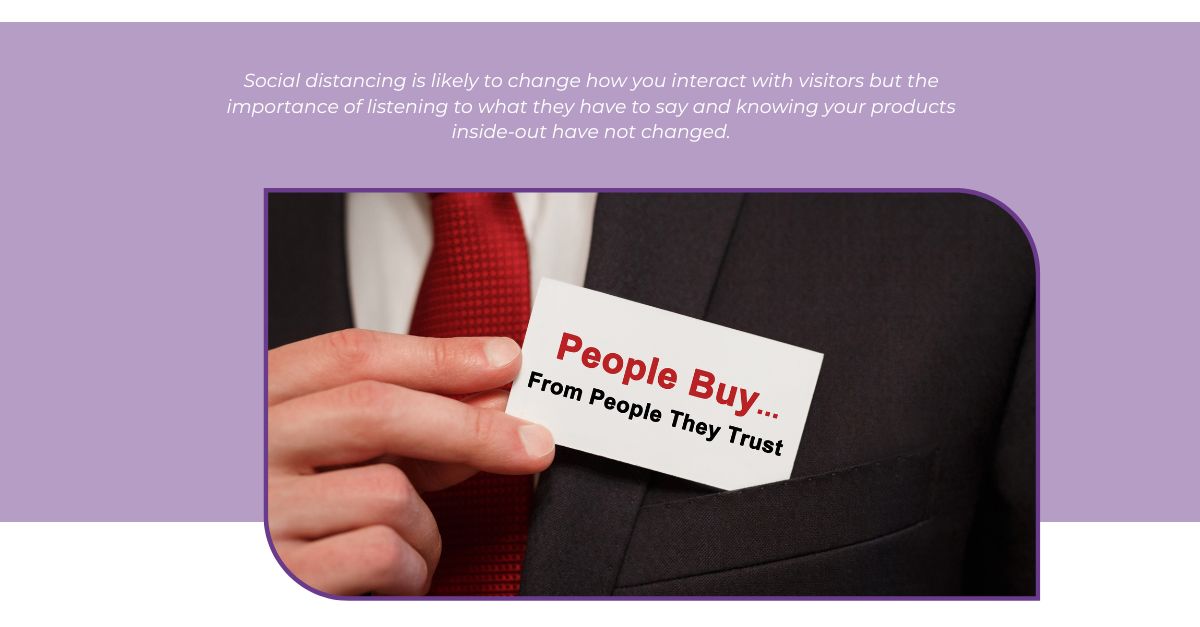
9 – Audience Profiling
Your target audience profile (from your attendance at previous shows and your other marketing activities) will have fed into your communications and content strategies for the upcoming event; or it certainly should have.
It’s important though that you use this next show to revise your audience profile.
When conversing with visitors, your team will, of course, be asking about specific challenges: What are the visitors trying to achieve? What do they need? What are their timeframes? However, (as a company) you’re missing a trick if you don’t use the event to revise your broader understanding of your target audience; and not just what brought them to your stand that day.
For example, what are your visitor’s go-to places for information? Do they use social media? If so, do they interact with it? Do they read blogs? Are there any particular topics they’d like to see?

Some questions can be slipped into conversations with visitors. However, to develop a broad understanding of your target audience, you need to be asking the same questions to as many people as possible. To do that you should devise a questionnaire, the completion of which will enable a visitor to enter a draw and perhaps ‘earn’ a gift there and then – see section 7 (competitions and giveaways).
10 – Post Show Activity Preparations
It is essential to follow up on all leads as soon as possible after the show. Indeed, if you are using an integrated system for managing your scheduled appointments and for capturing footfall leads there is little reason why an initial Thank You email cannot be sent within minutes of each meeting.
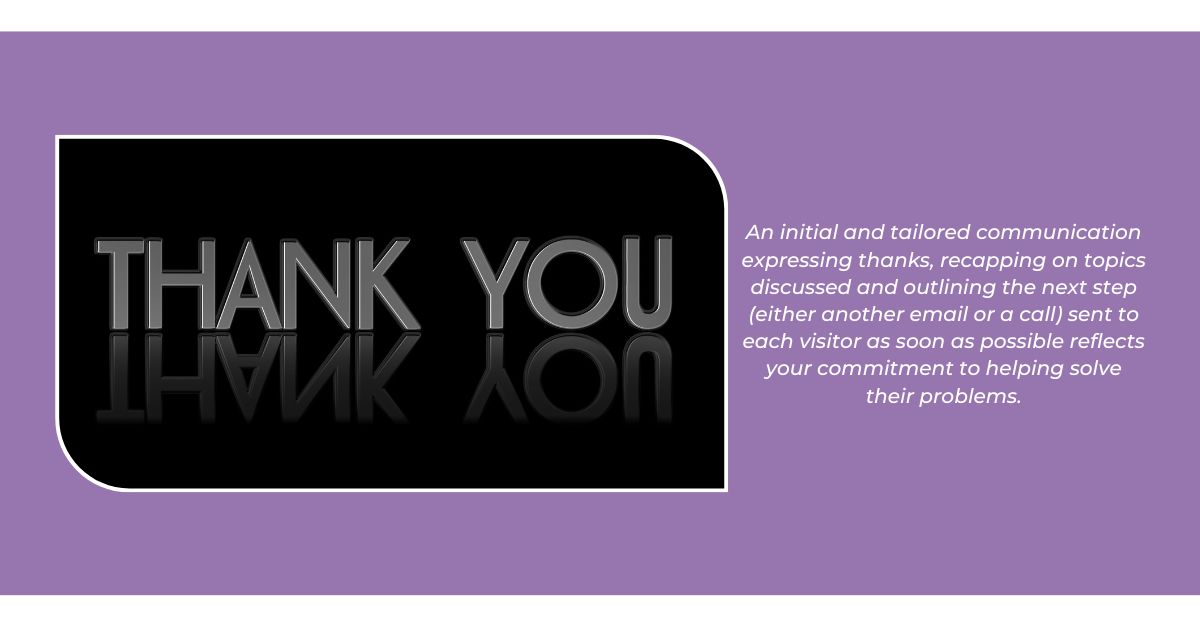
You also need to prepare ‘no-show’ communications for those who had scheduled appointments but failed to call by your stand.
If you are going to be at the event yourself, the importance of lining up post-show communications beforehand cannot be over emphasised as, upon your return to your office, you will be facing the tail end of some of the bigger logistics, such as getting the stand back into storage.
Summary
Though the few weeks leading up to a show or trade event are likely to be very busy, none of the 10 activities we’ve outlined in this guide should take up too much of your time …. or prove difficult to implement. It’s likely you’re already planning to do some of the activities discussed anyway, but if you can manage eight or more of those we’ve listed, then you’ll be making excellent use of your stand space, and your sales team.

